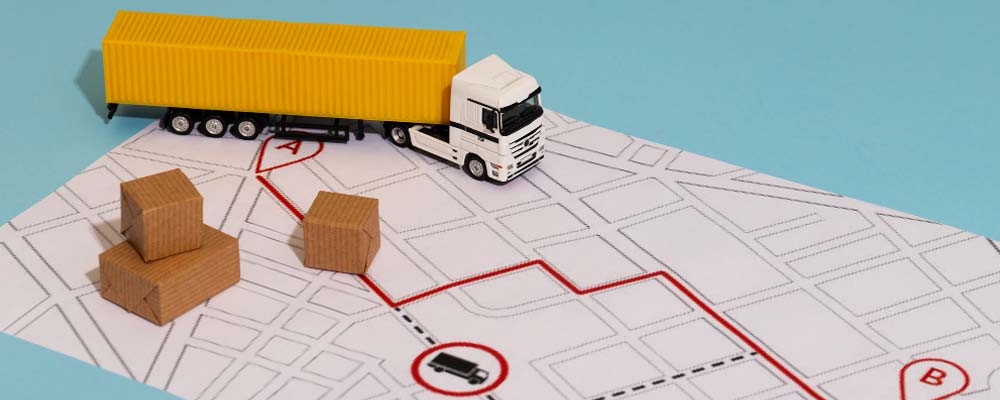
Welcome to our comprehensive guide on the road freight shipment process. Understanding the intricacies of road freight can help streamline your operations and improve efficiency.
What is Road Freight?
Road freight refers to the transportation of goods using motor vehicles over roads. This method is highly versatile and can be used for domestic and international shipments. It’s ideal for transporting a wide range of goods, from raw materials to finished products, directly from the point of origin to the destination.
Benefits of Road Freight
- Cost-Effective: Lower operational costs compared to air or rail transport.
- Flexibility: Ideal for short-distance and last-mile deliveries.
- Accessibility: Can reach remote and rural areas where other transportation modes may not be feasible.
- Speed: Faster transit times for short to medium distances.
Key Players in the Road Freight Process
- Shippers: Entities, whether individuals or businesses, that require the transportation of goods.
- Freight Forwarders: Agents who organize shipments and manage transportation logistics.
- Carriers: Companies or individuals who physically transport the cargo.
- Customs Brokers: Specialists who handle customs clearance and ensure compliance with regulations.
- Receivers: End recipients of the shipped goods.
Road Freight Shipment Process
1. Planning and Booking
Before the actual shipment, thorough planning is essential. Here’s what you need to do:
- Determine Freight Requirements: Identify the type, size, and weight of the goods.
- Select a Carrier: Choose a reliable carrier that meets your specific needs.
- Book the Shipment: Reserve space with the chosen carrier, specifying all shipment details.
2. Documentation
Proper documentation is crucial for a smooth road freight process. Key documents include:
- Bill of Lading (BOL): A legal document between the shipper and carrier detailing the type, quantity, and destination of the goods.
- Commercial Invoice: A bill for the goods being shipped, used for customs declaration.
- Packing List: A detailed list of the items packed, useful for inventory and customs purposes.
- Insurance Documents (if applicable): Ensure that the goods are covered against potential loss or damage.
3. Loading and Transport
Once the documentation is complete, the next steps involve physical handling:
- Loading: Carefully load the goods onto the vehicle, ensuring proper handling and securing.
- Transport: The carrier transports the goods to their destination. Real-time tracking and monitoring can enhance security and efficiency.
4. Customs Clearance (if applicable)
For international shipments, customs clearance is a critical step:
- Submit Documents: Provide all required documents to the customs authorities.
- Customs Inspection: Goods may be inspected by customs officials.
- Payment of Duties and Taxes: Pay any applicable duties and taxes to clear the goods.
5. Delivery and Unloading
Upon reaching the destination, the final steps include:
- Delivery: The carrier delivers the goods to the receiver’s designated location.
- Unloading: Unload the goods carefully to avoid damage.
- Receipt Confirmation: Obtain a signed receipt from the receiver to confirm delivery.
How Is Road Freight Cost Calculated?
Understanding how road freight costs are calculated can aid in budgeting and negotiating with carriers. Several factors influence the total cost, including:
1. Distance
The main factor influencing costs is the distance between the pickup and delivery locations. Longer distances generally result in higher costs due to fuel consumption, driver time, and vehicle wear and tear.
2. Weight and Volume
The weight and volume of the shipment significantly impact the pricing. Heavier and bulkier shipments require more resources and space, leading to higher costs. Carriers often use a combination of weight and volume to determine the chargeable weight.
3. Type of Goods
Certain types of goods, such as hazardous materials or perishable items, may incur additional charges due to special handling requirements, regulatory compliance, and insurance.
4. Fuel Surcharges
Fuel prices can fluctuate, and carriers often include a variable fuel surcharge to cover these changes. This surcharge is typically calculated as a percentage of the base freight rate.
5. Route and Accessibility
The complexity of the route and the ease of access to pickup and delivery locations can affect costs. Deliveries to remote or hard-to-reach areas may incur additional charges.
6. Additional Services
Costs can be affected by additional services such as:
- Liftgate Service: Needed when there’s no loading dock at the pickup or delivery location.
- Inside Delivery: Delivering goods inside a building rather than just to the curb.
- Residential Delivery: Deliveries to residential areas often attract higher fees due to accessibility and security concerns.
7. Insurance
Opting for additional insurance coverage to protect against potential damage or loss can increase the overall cost.
8. Seasonal and Market Variables
Freight rates can vary based on seasonal demand and market conditions. Peak seasons or periods of high demand can result in increased rates.
Sample Cost Computation
Let’s consider a hypothetical example to illustrate how road freight costs are computed:
Shipment Details:
- Distance: 300 miles
- Weight: 2,000 lbs
- Type of Goods: Standard non-perishable items
- Service: Basic delivery without additional services
Cost Breakdown:
- Base Freight Rate:
- Distance: 300 miles
- Rate: $1.50 per mile
- Cost: 300 miles * $1.50/mile = $450.00
- Weight Charge:
- Weight: 2,000 lbs
- Rate: $0.50 per lb
- Cost: 2,000 lbs * $0.50 = $1,000.00
- Fuel Surcharge:
- Base Rate: $450.00
- Surcharge Percentage: 10%
- Cost: $450.00 * 10% = $45.00
- Insurance (optional):
- Coverage: $20,000
- Rate: 1% of value
- Cost: $20,000 * 1% = $200.00
Total Cost:
- Base Freight Rate: $450.00
- Weight Charge: $1,000.00
- Fuel Surcharge: $45.00
- Insurance: $200.00
Total Cost: $450.00 + $1,000.00 + $45.00 + $200.00 = $1,695.00
In this example, the total cost for road freight would be $1,695.00. By breaking down each component, businesses can better understand the different factors that contribute to the overall shipping expense and make more informed decisions regarding their logistics strategies.
Tips for Efficient Road Freight Management
- Partner with Reliable Carriers: Build relationships with trusted carriers to ensure timely and secure deliveries.
- Use Technology: Implement tracking systems and freight management software for better oversight and coordination.
- Optimize Routes: Plan efficient routes to minimize travel time and reduce costs.
- Ensure Compliance: Stay updated with regulations to avoid delays and penalties.
Conclusion
Road freight is a vital component of the logistics and supply chain industry. By understanding the process and best practices, you can ensure smooth and efficient road freight operations.
By following this guide, you’ll be well-equipped to handle the complexities of road freight and ensure successful shipments every time.











